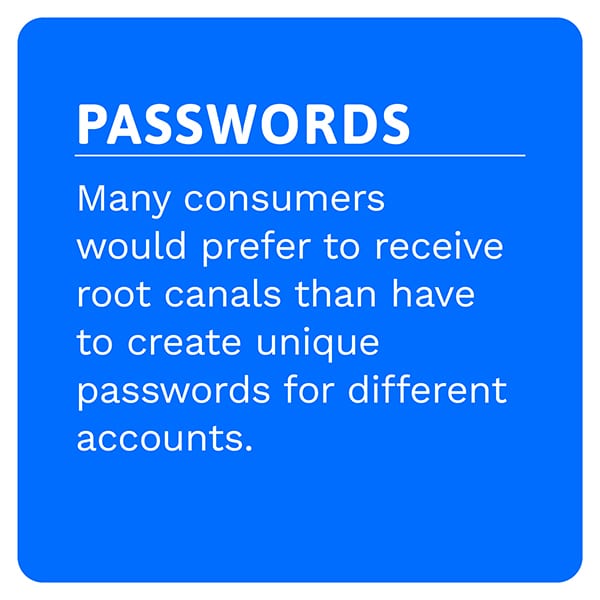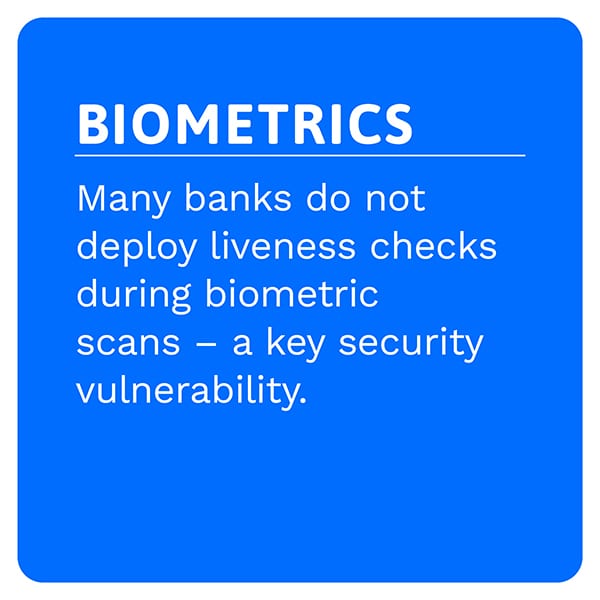New Report: Why Two-Thirds Of Digital Banking Customers Abandon Sign-Up

With studies estimating that 6 billion consumers will be making transactions electronically by 2023, it is safe to say that digital is becoming the new default when it comes to payments.
Many of these consumers began using digital payments for the first time over the past year as bank branches closed or modified their hours. Even as many financial institutions (FIs) begin reopening their brick-and-mortar locations at full capacity, the digital convenience to which consumers have grown accustomed has made an impact.
Still, there is one part of the digital banking processes that often leaves a lot to be desired: onboarding. Sign-up sets the tone for the digital relationship between FIs and their customers, and nothing is more off-putting to these customers than sluggish procedures loaded with redundant entry information and time-consuming authentication measures. These issues cause up to half of all bank customers to abandon an onboarding process at some point during their lives, meaning it is critical for FIs to strike the right balance between offering convenience and security during sign-up.
The June edition of the Authenticated Payments Report examines the challenges FIs face in delivering seamless, standout onboarding experiences. It also assesses how technologies such as biometrics and identity document analysis can help banks accelerate their sign-up processes without eliminating robust security measures — a key consideration as identity theft picks up globally. 
Around The Authenticated Payments Space
Convenience is important to consumers, but FIs must take care to ensure that they do not offer convenience at the cost of security. One particularly alarming fraud trend taking root in the financial space is credential stuffing, in which fraudsters tap automated algorithms to sequentially test stolen usernames, email addresses and passwords in an effort to crack into victims’ bank accounts. The growing popularity of digital banking has fostered a corresponding rise in credential stuffing over the past year, and FIs need to keep their security measures up to snuff if they wish to keep cybercriminals from hitting it big with schemes that can pull in millions of dollars.
In addition to being found wanting when it comes to security, traditional authentication methods like passwords are also becoming less popular with customers. One survey found that 10 percent of customers would rather get a root canal than create unique passwords for all of their accounts, in fact, and many are prone to recycling their credentials across various websites. This highlights the need for FIs to deploy emerging authentication technologies that can bring the speed and ease consumers expect while simultaneously safeguarding them from bad actors.
Biometrics are proving to be a particularly eff ective and well-received payment authentication method, research reveals, and credit cards with built-in fingerprint-scanning technology are becoming especially popular. About half of consumers in Norway, Sweden and the United Kingdom say they would even switch FIs to obtain a biometric card, and 80 percent would be up for joining trials for such cards as soon as possible. These cards are also usually powered by the same technology used in point-of-sale (POS) systems, which means many merchants can accept them without making costly upgrades to their infrastructure.
ective and well-received payment authentication method, research reveals, and credit cards with built-in fingerprint-scanning technology are becoming especially popular. About half of consumers in Norway, Sweden and the United Kingdom say they would even switch FIs to obtain a biometric card, and 80 percent would be up for joining trials for such cards as soon as possible. These cards are also usually powered by the same technology used in point-of-sale (POS) systems, which means many merchants can accept them without making costly upgrades to their infrastructure.
Read more about these stories and other headlines in the Report.
Fremont Bank On Tapping Proactive Data Analysis To Ease Onboarding In Digital Banking
Digital banking has become more popular than ever over the past year, and few consumers who made the leap to digital services plan on returning to their old ways. Even digital banking services cannot avoid the necessary and often-frustrating experience of user onboarding, however. Thankfully, many FIs are working on ways to streamline these processes without compromising customers’ security — thus giving them the best of both worlds.
In this month’s Feature Story, Vivian Yeung, executive vice president of Digital and Technology at California-based Fremont Bank, explains how banks can leverage proactive data analysis to spotlight and address drop-off points during customer onboarding.
Deep Dive: How Biometrics And Document-Scanning Tech Can Tackle Digital Banking’s Onboarding Frictions
Banking has gone largely digital in recent months, but many FIs still require potential customers to visit physical branches to onboard and activate their accounts. Those that do have fully digital onboarding solutions can still face hurdles and frictions, which can drive many consumers to abandon their sign-up processes and head to competitors with simpler systems.
This month’s Deep Dive examines the difficulties digital banking services providers face when onboarding customers and how biometrics and identity document verification services can help them offer smoother, more secure sign-ups.
About The Report
The Authenticated Payments Report, a PYMNTS and LoginID collaboration, is the go-to monthly resource for updates on trends and changes in payments authentication.

